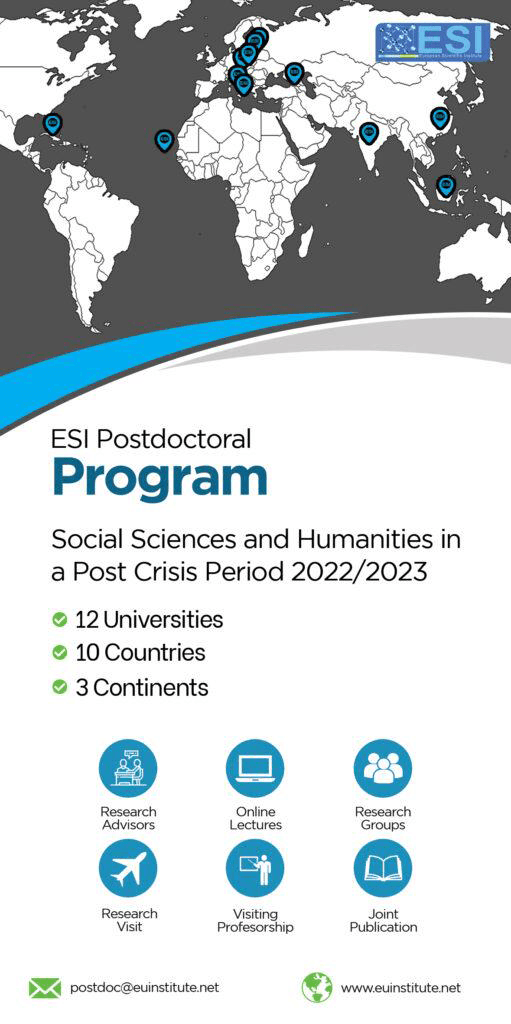The Rising Tendency of Migration Among Young Generation and its Impact on the Bangladeshi Economy
Abstract
This study investigates the rising tendency of migration among the young generation in Bangladesh and its perceived impact on the national economy. Drawing upon the Push-Pull Theory (Lee, 1966) and the Theory of Planned Behavior (Ajzen, 1991), the research examines how push factors (e.g., political instability, job scarcity), pull factors (e.g., better salaries, residency prospects), and financial feasibility influence students’ intention to migrate. Data were collected from 250 university students through a structured questionnaire and analyzed using Partial Least Squares Structural Equation Modeling (PLS-SEM). The findings reveal that pull factors exert a stronger influence on migration intention than push factors, suggesting aspirational migration driven by global opportunities rather than merely escaping domestic constraints. Financial feasibility partially mediates the impact of push/pull factors, confirming the role of economic access in migration decisions (Stark, 1991). Interestingly, government policy perception does not significantly moderate migration intention, highlighting a gap between policy initiatives and youth trust or awareness (Siddiqui, 2020). Moreover, migration intention shows a negative correlation with perceived economic impact, reflecting student concerns about brain drain despite recognizing the benefits of remittances (Docquier & Rapoport, 2012). The study recommends reforms in employment, education, and diaspora engagement policies to address migration drivers while harnessing its developmental potential. These insights contribute to the discourse on youth mobility and economic sustainability in emerging economies like Bangladesh.
Downloads
References
2. Ajzen, I. (1991). The theory of planned behavior. Organizational Behavior and Human Decision Processes, 50(2), 179–211. https://doi.org/10.1016/0749-5978(91)90020-T.
3. Akter,S.,Barman, A., & Rafiq, M. (2023). Post-graduate migration decisions among South Asian youth: A study of Bangladesh. Journal of Global Development Studies, 15(1), 44–59.
4. Alam,S.,& Roy, T. (2022). International education and remittance flows in South Asia: Evidence from Bangladesh. South Asia Economic Journal, 23(2), 133–150.
5. Asis, M. M. B. (2017). The Philippines: Beyond labor migration, toward development and (possibly) return. Migration Policy Institute. https://www.migrationpolicy.org/article/philippines-beyond-labor-migration-toward-development-and-possibly-return
6. Bălan, M. (2015). Youth migration in developing economies: Causes and consequences. Journal of Social Economics, 2(1), 13–22.
7. BBS. (2021). Bangladesh Bureau of Statistics Yearbook 2021. Government of Bangladesh.
8. Biswas, T., & Khan, A. R. (2024). Brain drain and the return dilemma: Voices of Bangladeshi students in Europe. Migration and Development Review, 12(1), 28–47.
9. Chacko, E., & Gebre, P. H. (2013). Leveraging diaspora capital for development: Lessons from the Ethiopian diaspora. Global Economy Journal, 13(1), 1–14. https://doi.org/10.1515/gej-2012-0034
10. Chowdhury, F., & Azam, A. (2018). Push and pull factors influencing migration decisions among Bangladeshi students. Asian Journal of Social Sciences, 46(3), 221–236.
11. Czaika, M., & Vothknecht, M. (2014). Migration and aspirations–Are migrants trapped on a hedonic treadmill? IZA Journal of Migration, 3(1), 1–21.
12. Docquier, F., & Rapoport, H. (2012). Globalization, brain drain, and development. Journal of Economic Literature, 50(3), 681–730. https://doi.org/10.1257/jel.50.3.681
13. Farhanaz,L.,&Yamin,A.B. (2016). Determinants of student migration in Bangladesh. Bangladesh Journal of Sociology, 13(1), 44–56.
14. Fornell, C., & Larcker, D. F. (1981). Evaluating structural equation models with unobservable variables and measurement error. Journal of Marketing Research, 18(1), 39–50.
15. Hair, J. F., Hult, G. T. M., Ringle, C., & Sarstedt, M. (2019). A primer on partial least squares structural equation modeling (PLS-SEM) (2nd ed.). SAGE Publications.
16. Hasan, K., & Alam, M. J. (2020). Effectiveness of Bangladesh’s higher education policy in reducing student migration. Policy and Planning Journal, 12(3), 33–49.
17. Hasan, M. R., & Mahmud, R. (2021). Economic costs of student migration from Bangladesh: A macroeconomic perspective. Bangladesh Economic Review, 39(2), 74–90.
18. Henseler,J.,Ringle,C.M.,& Sarstedt, M. (2016). Testing measurement invariance of composites using partial least squares. International Marketing Review, 33(3), 405–431.
19. Ho, E. L.-E., & Tyson, A. (2021). Aspirations and anxieties: Migrant youth and the politics of belonging. Children’s Geographies, 19(1),116. https://doi.org/10.1080/14733285.2020.1759246
20. Hossain, M., & Uddin, M. T. (2023). Comparative satisfaction of domestic and international students with higher education institutions: Evidence from Bangladesh. Higher Education Policy and Management, 36(4), 211–229.
Copyright (c) 2025 Md. Saiful Islam, Ayesha Aktar, Kazi Mohammed Kamal Uddin

This work is licensed under a Creative Commons Attribution 4.0 International License.








